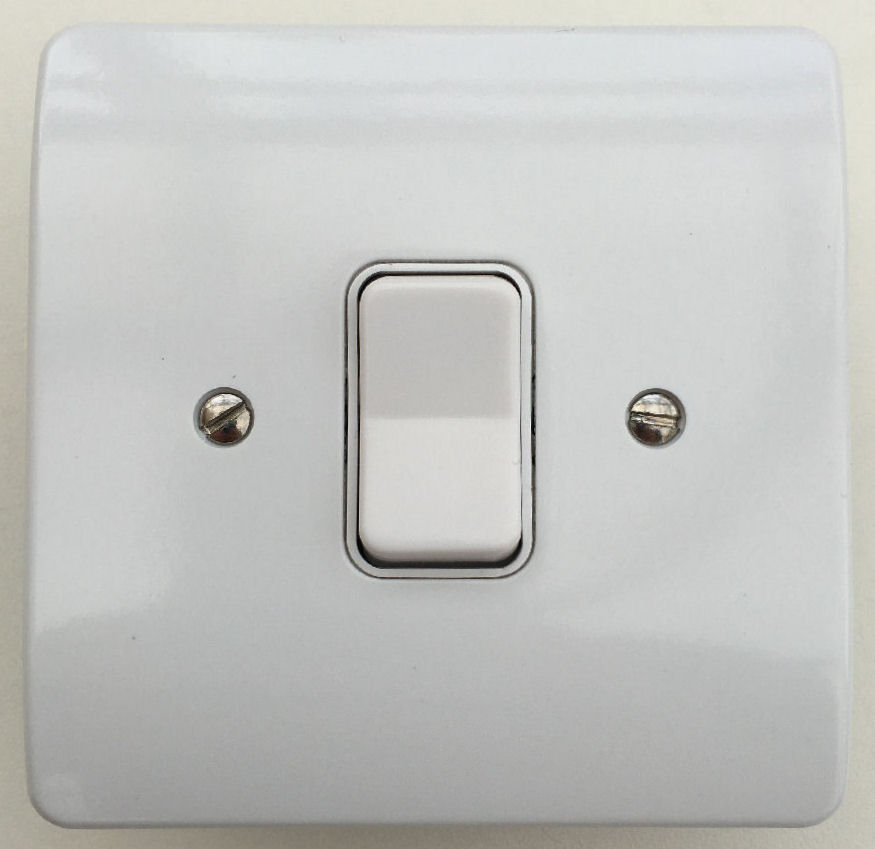Smart Home Smart Light Switch Project

This project aims to deliver fantastic quality smart switches which work with any type of lighting and also any combination lighting types. It will provide the best possible user experience by working seamlessly with all the other methods of lighting control, including voice control and allowing intelligent control by my contextual smart home, to deliver a zero touch user experience. It will be independent of 3rd party vendors, their technology and cloud services.
Although this is described as a smart switch project for lighting, it actually uses two separate switch designs. The first is for binary (on/off) lighting and and the second is also for colour changing lighting.
The key goal is to deliver a great user experience and allow any type of lighting to be used with manual switches AND intelligent smart home control. This means I have a much greater choice of stylish and more cost effective lighting fixtures and I'm not limited by vendor choice or smart home technology choice (Wi-Fi, Z-Wave, ZigBee, etc. This makes the whole installation much more future proof.
Advantages
- Top quality, reasonable cost manual switches can be used to deliver smart lighting control, that works seamlessly with all other smart home control mechanisms.
- The smart switches can be configured as one-gang, two-gang, four-gang, eight-gang etc. if required.
- One or more witches can be configured to control one or more light fixtures and this can easily be reconfigured later if required.
- One or more witches can be used to control various different types of light fixtures, including a mixture of 'dumb' lighting and smart bulbs.
- Switches can continue to work during power outages (assuming fixtures are behind protected power) and all state is retained through power outages.
Design
This design is based on breaking smart home lighting down into its constituent parts:
- The physical, networked 'smart switch' used to operate the lighting.
- The lighting controller.
- The power delivery system.
- The actual lighting fixture, bulbs, LED strips, smart bulbs, etc.
- The Home Control System.
Smart Switch
In most instances, the 'smart switch' is simply a networked user interface that controls one of more lights.
- The 'smart switch' will send events to the Home Control System.
- It may also be an integral part of a 'lighting controller'.
- The smart switch doesn't necessarily need to be physically connected to mains power or the light fixture but, they could be if required (more on this later).
This disconnect between the switch, power and light fitting(s) means that these switches can be used to control any type of smart lighting including binary (on/off) lighting, dimmable lighting, colour changing lighting and smart bulbs (e.g. Philips Hue).
The mapping of one or more switches is done in the control system. This means that it is easy to reconfigure or change fixtures and fittings, without having to change the wiring. Many smart switches can also be used to control one or more light fixtures. It's a simple configuration change.

In my current home, I use MK Grid switches as my 'standard' choice for binary (on/off) lighting and dimmable lighting because they are very high quality, look great, have a nice quality feel in operation and come in a wide range of options. They can also be bought in 1-gang, 2, 3, 4 and even 8-gang layouts.
The switch shown here is a K4900 on-off-on switch that does not latch (normal position is centre off).

I'm also using these rotary + push switches/encoders for and colour changing lighting control. They have a momentary push feature whcih can be used to toggle the light state and rotate enable brightness control. If they are pushed and rotated at the same time, then they will allow colour selection.
Home Control System (HCS)
My contextual smart home uses a DIY Home Control System but, this project equally applies to 3rd party home control systems, including open-source systems like Home Assistant.
Lighting Controller
The lighting controller takes a request for a particular state, brightness or colour and converts it into an electrical output (e.g. RGBW PWM voltages to an LED strip) or network request (e.g. a Philips Hue hub commands sent to a Philips Hue bulb).
Power
In traditional home wiring the switch is physically controlling power directly to a bulb. In my model, the mains power feed to each switch is no longer required. The power is fed to the controller (which could be installed anywhere) and this then provide power to the fixture.
This essentially means that only an Ethernet network cable is required at each physical switch point on the wall and Power over Ethernet (PoE) is used to deliver power reliably to the switch.
Colour Selection

This colour wheel shows the colours I support using my smart switches. In addition, there is white, cool white and warm white.
Examples
Philips Hue
This first example will show how my smart switch can be used to control the state, brightness and colour of one or more Philips Hue bulbs.
Summary
The first thing to mention is that this project really does deliver a great user experience when it comes to lighting and manual control via 'switches'. Not only do they feel good to operate but, the performance and reliability is also excellent.
The second thing to mention is that I'm not tied to any vendors, their expensive smart lighting and restrictive APIs. I'm free to use any dumb light fixture or type of lighting I want and then make it rreally smart. This includes lighting fixtures I have designed and built myself, both 12Vdc and mains powered.
In the majority of cases, I'm using wired Ethernet for lighting control, to minimise latency and ensure the best possible reliability and security.



